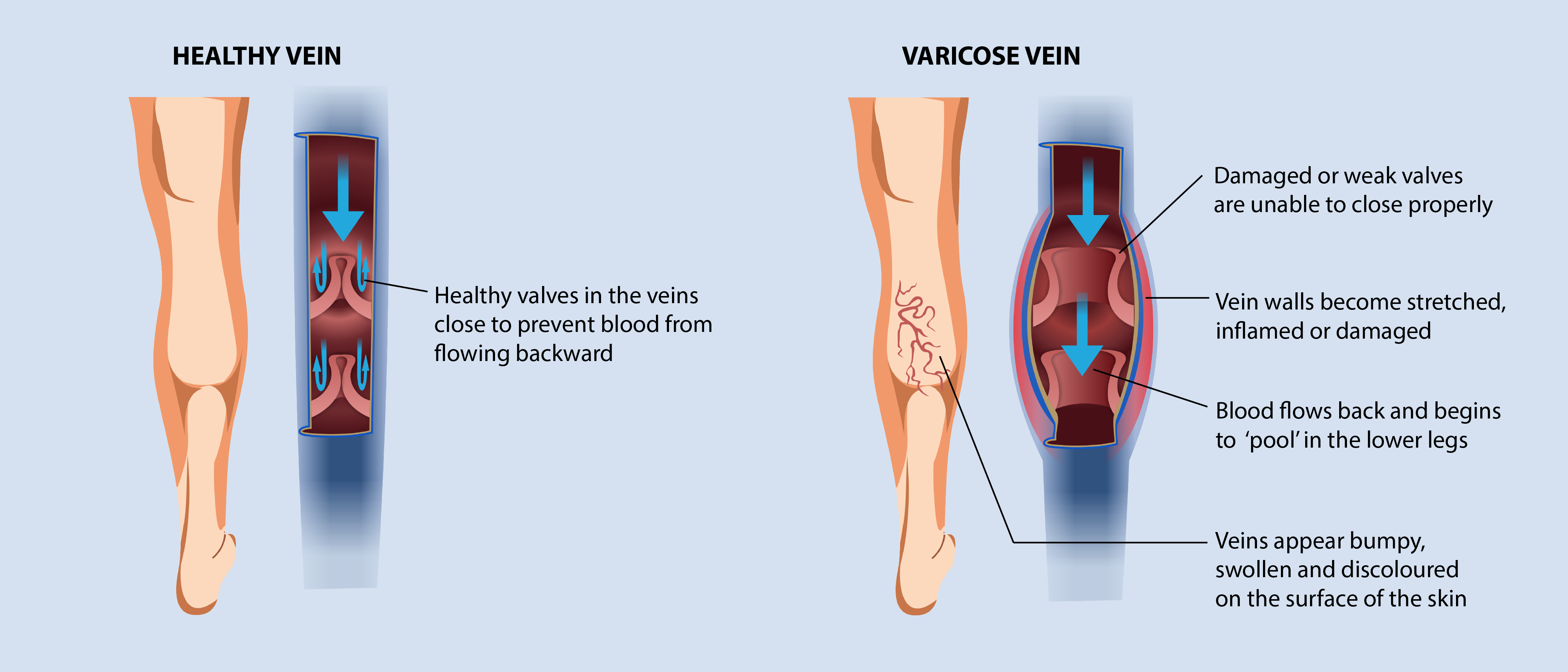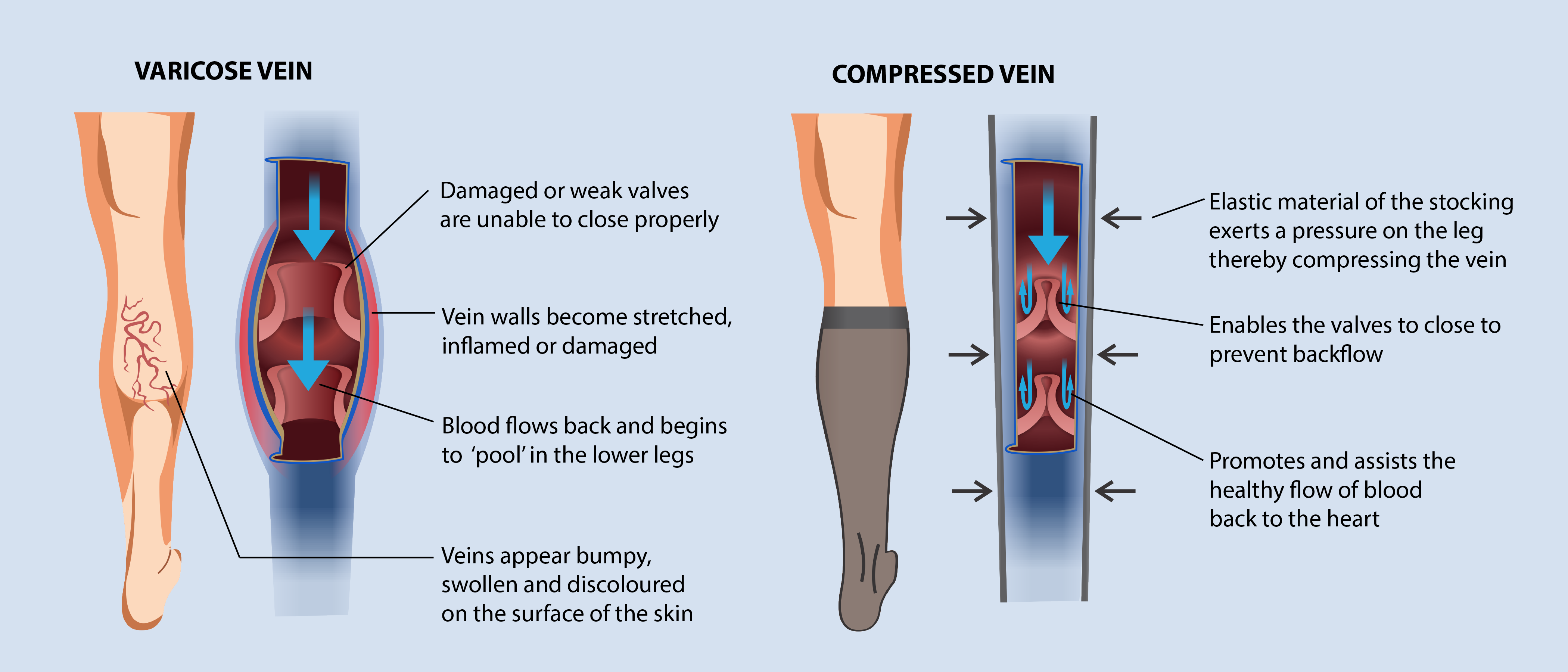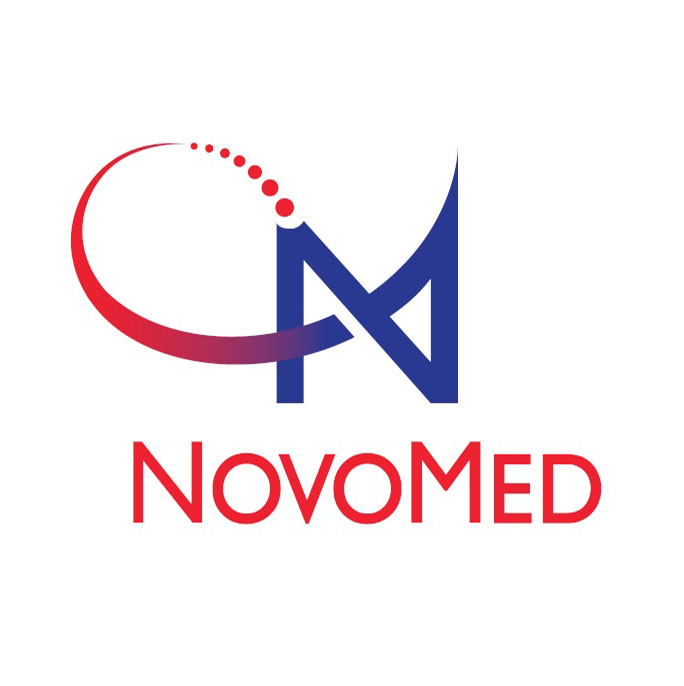Varicose Veins
Varicose veins are enlarged, raised veins that appear on the legs and feet. They appear bumpy and twisted on the surface of the skin and have a green, blue, or red colour. Varicose veins are painful in nature. They primarily occur in the lower limbs, though they may appear in other body parts as well. The condition can affect any one or both the legs.
This condition is chronic in nature, which means that it can last for many years or even for a lifetime. In most cases, the more swollen the varicose vein, the more serious is the problem. Many times, varicose veins begin as spider veins. Also known as telangiectasias, spider veins are a cluster of small veins that can be seen under the skin. They look like spider webs or branches of trees. If spider veins are not treated on time, it can advance to form varicose veins.

This condition arises when the valves in the veins of the legs get damaged, causing blood to flow in the backward direction (towards the feet) and pool in the legs. The function of the veins is to transport oxygen-depleted blood from various parts of the body back to the heart. In the legs, this action needs to be performed against the force of gravity, and hence the valves in the veins need to exert tremendous pressure on the vein walls.
In case the walls of the veins become weak, stretched, or damaged, blood cannot be effectively pumped to the heart. This causes it to leak inward and flow in the opposite direction (towards the feet). And when this happens, blood gets accumulated in the veins, making them appear enlarged and swollen.
The farther a vein is from the heart, the more prone it is to turn varicose. This is because gravity makes it difficult for the veins to pump blood back to the heart. And this is the reason why legs and feet are the most prone to varicose veins.
There are several factors that can increase your chances of developing varicose veins:
- Gender: women are more likely to develop this condition as compared to men
- Heredity: it is possible for this condition to be passed on from one generation to the other. A person who has a family member suffering from varicose veins is more at risk
- Pregnancy: the risk of varicose veins is the least during the first pregnancy and increases with every subsequent pregnancy
- Age: the chance of developing this condition increases with age. People over the age of 45 are more at risk
- A sedentary lifestyle: People who stand or sit for prolonged hours are more likely to develop this disease
Varicose veins symptoms can be broadly divided into two categories, visible symptoms and sensational symptoms.
Visible symptoms:
- Swollen or inflamed blood vessels
- Discoloration of the blood vessels
- Leg edema (swollen legs)
- Swollen ankles
- Bruising or bleeding in minor wounds
- Venous ulcers (due to rupturing of a blood vessel)
Sensational symptoms:
- Painful and heavy legs
- Restless and achy legs
- Fatigue
- Dermatitis (affected area becomes red, itchy, and dry)
It is essential to be aware that many people experience no major symptoms (sensational type) and the condition initiates purely cosmetic concern (that is, the veins in the legs look swollen and discoloured). However, ignoring this can result in the aggravation of the disease with time and even cause other, more severe venous problems such as leg ulcers and deep vein thrombosis.
Simple measures like the ones mentioned below can help in managing and preventing varicose veins:
- Avoid prolonged periods of sitting or standing
- Ensure to maintain a regular exercise regime
- Raise the legs at an angle to improve blood circulation
- Keep your weight in check by following a proper diet
- Use compression stockings to assist in the proper flow of blood
Compression stockings are made of an elastic material that helps to promote a healthy flow of blood towards the heart. The pressure exerted by these stockings compresses or squeezes the legs of the patient, there by assisting in blood flow against gravity. Using compression therapy for varicose veins is a proven method for managing the symptoms of the disorder, but in case you experience flaky or itchy skin while using compression stockings, don’t delay in seeking medical help. Click here to locate a doctor close to you.





